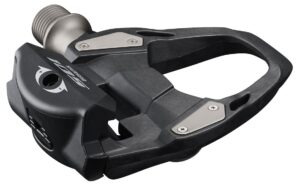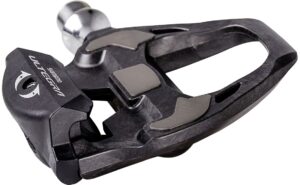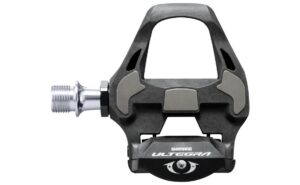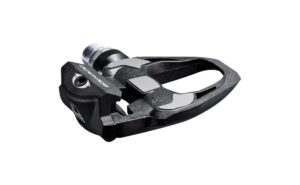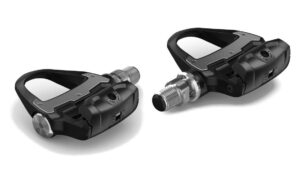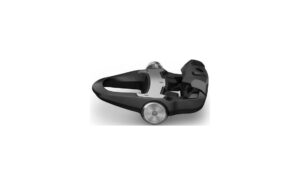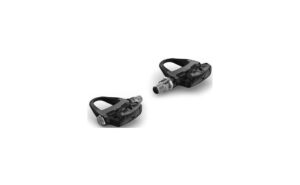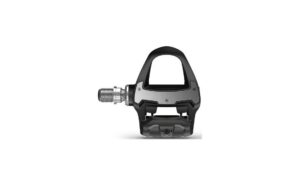-
- -27%
Shimano 105 PD-R7000 SPD-SL Pedal
- Original price was: €165,00.€120,00Current price is: €120,00. Inc. VAT
-
- -19%
Shimano PD-R8000 SPD-SL Pedal
- Original price was: €185,00.€150,00Current price is: €150,00. Inc. VAT
-
- -16%
Shimano PD-R9100 SPD-SL Pedal
- Original price was: €285,00.€240,00Current price is: €240,00. Inc. VAT
-
- -25%
Shimano PD-R9100E SPD-SL pedal
- Original price was: €295,00.€220,00Current price is: €220,00. Inc. VAT
-
- -6%
Garmin Rally ™ RS100 – Power Meter – Single Sensor
- Original price was: €599,00.€565,00Current price is: €565,00. Inc. VAT
-
- -12%
Garmin Rally™ RS200 Power Meter Pedals
- Original price was: €999,00.€875,00Current price is: €875,00. Inc. VAT
BUY ROAD BIKE PEDALS ONLINE
Are you looking for the right pedals for your racing bike so that you can ride your bike safer, faster and more efficiently? Then you are exactly right with us. From the classic clipless pedal to practical combination pedals and magnetic pedals, nothing to be desired is left unfulfilled in our shop. But which pedal system on a racing bike is right for you? What are the differences between MTB pedals and clipless pedals on road bikes? And what should you pay attention to when buying?
WHAT TYPES OF ROAD BIKE PEDALS ARE THERE AND WHAT ARE THE DIFFERENCES?
After buying your first racing bike, you were surprised about missing pedals and almost called customer service? The missing pedals are no coincidence, but due to the incredible variety of pedals. After all, the decision for a pedal or pedal system is an individual decision for every racing cyclist. Road bike pedals are basically divided into three groups: clipless pedals with a variety of pedal systems, combination pedals and magnetic pedals, which are particularly interesting for flexible bikers.
ROAD BIKE CLIPLESS PEDALS
A firm connection to the pedal is essential for efficient cycling with maximum performance. At the same time, for safety reasons, clicking out must happen quickly and reliably so that you can safely remove your foot from the bicycle pedal at all times. No wonder that modern clipless pedals now set the tone on racing bikes and have replaced cage pedals with straps. Clipless pedals are also called system pedals. The system works very simply.

A plate called a “cleat” is mounted under your cycling shoe. With this plate, your shoe locks into the click mechanism of the pedal with gentle pressure. This usually works via a spring mechanism, the release hardness of which you can adjust to your taste on most bicycle pedals. To release your foot from the pedal, simply turn it to the side away from the pedal. The most common pedal systems on racing bikes are the SPD and SPD-SL click systems from Shimano as well as Look, Time and Speedplay.
ROAD BIKE MAGNETIC PEDALS
Magnetic pedals are a small revolution in the racing bike scene. The click mechanism, like the click pedals on racing bikes, is replaced by a strong magnetic connection. There is no classic cleat under your cycling shoe, but a magnetic counterpart that fixes your foot on the road bike magnetic pedal. You simply release your foot from the pedal by lifting it.
The magnetic connection offers you several advantages. Since there are no classic cleats and no mount on the pedal, you can even wear street shoes on your racing bike if necessary. In addition, the magnetic connection offers you more freedom of movement on the road bike pedal, which always allows for a natural knee angle. Not to mention the lower maintenance effort.
ROAD BIKE COMBINATION PEDALS
Combination pedals on road bikes bring together the best of the world of clipless pedals and flat pedals. A click system such as Shimano’s SPD system is mounted on one side of the pedal. The other side of the pedal, on the other hand, is flat and equipped with knobs, pins or a non-slip pedal cage. This means you can ride your bike with either racing bike shoes or even street shoes, depending on the situation.
Particularly practical: If you choose sporty mountain bike shoes with appropriate profiling, you can even dynamically switch between the pedal side while riding. You can easily combine maximum safety in tricky places and optimal performance. This makes road bike combination pedals a real tip for touring cyclists and gravel bikers.
WHAT ARE THE ADVANTAGES OF SPECIAL RACING BIKE PEDALS?
Racing cyclists who have once ridden with special racing bike pedals no longer want to do without them. Road bike pedals are not only light and incredibly stylish, they also have numerous other advantages for road bikers from beginners to professionals:
- No more slipping: Especially when it rains, many bicycle pedals turn into a slide. Jerky slipping can lead to painful bruises at best and nasty falls at worst. This cannot happen due to the tight connection of the racing bike pedals.
- Optimal power transmission: Since the foot is fixed on the bicycle pedal, you not only use the pressure phase, but also the pull phase when pedaling. The so-called “round kick” helps you get 100 percent of your horsepower onto the road. You save so much energy, especially on the mountain.
- Higher cadence: High cadence is a problem for many cyclists because their feet lift off the pedal. The fixation comfortably allows high cadence of 90 or more revolutions per minute. This is good for your knees and your individual riding style.
- Even muscle strain: Even strain on the muscles is important when cycling to prevent muscular imbalances. Road bike pedals support the balanced load between the front of the thigh and the back of the thigh.
- Perfect foot position: The fixation on the pedal always keeps your foot in the perfect position. This means that twisting into an unfavorable angle is not possible. This in turn prevents incorrect strain on the knee, ankle and hip.
WHAT IS THE DIFFERENCE BETWEEN ROAD BIKE AND MTB PEDALS?
The main difference between road bike pedals and MTB pedals is the click system. Mountain bike pedals are designed for use in adverse off-road conditions. They are more robust and are characterized by a self-cleaning function. Larger tolerances also allow you to easily click in and out anytime, anywhere, even with completely dirty pedals and cleats.
In tricky situations, which often occur off-road, you can get off the pedal particularly quickly. Road bike clipless pedals, on the other hand, guarantee you a tighter connection between shoe and pedal and thus stable guidance of the shoe. Optimal performance is very important here.
WHICH MANUFACTURERS OF RACING BIKE PEDAL SYSTEMS ARE RECOMMENDED?
The market for road bike pedals is dominated by two manufacturers, which make up the lion’s share of all systems. These are Shimano with the SPD click system and the French company Look . The pedal systems from Time are less common but at least as good . Ultimately, which manufacturer you choose is a matter of feeling. Choose the pedal system that you feel most comfortable with – all manufacturers are recommended.
WHAT SHOULD YOU CONSIDER WHEN BUYING ROAD BIKE PEDALS?
Road bike pedals are highly complex products that require a lot of research and development work. So you can’t really buy a “wrong pedal” as long as you stick to a branded product. However, make sure that you buy the pedal system that suits your intended use. While a tight Look, Time or Shimano SPD-SL pedal is the optimal choice for maximum performance, an SPD, combination or magnetic pedal is ideal for more freedom.
Another important factor is the height of the pedal. The following applies: the lower the height, the better the power transmission, as your foot is closer to the pedal axis. The size of your feet also plays a role in the optimal clipless pedals on a racing bike. Models in which you can adjust the so-called Q factor via the cleats are ideal for cyclists with large feet. If necessary, you can increase the distance between the shoe and the crank so that the shoe does not rub against the crank or chainstay.

